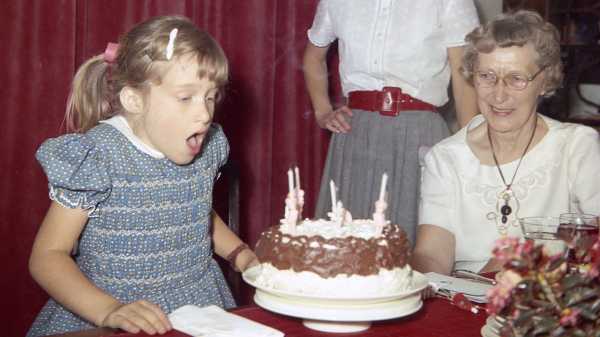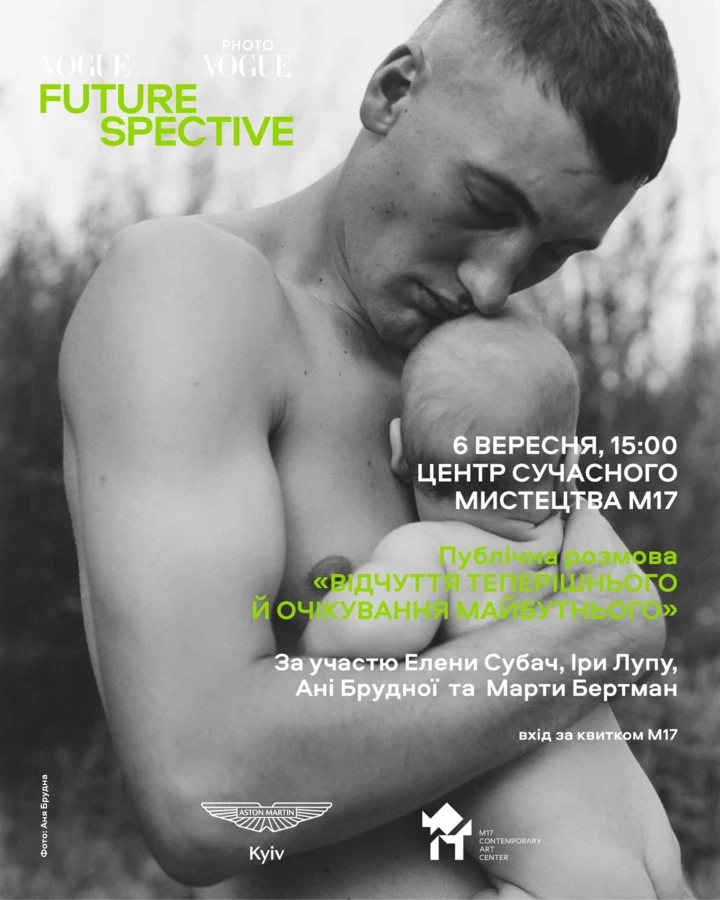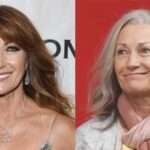
Save this storySave this storySave this storySave this story
Christmas wouldn’t be Christmas without an exchange of gifts among my two grandmothers, mother, and aunt, featuring the trait they shared: all four were left-handed. Waiting for them under the tree in our sunny Pasadena living room might be left-handed oven mitts or can openers, kitchen gadgets too mundane to pass as gifts for righties, but treasures to the matriarchal quartet. I’ll never forget the crows of delight one Christmas morning as they unwrapped identical packages to find pairs of left-handed sewing scissors, the first designed and widely marketed not just with upside-down handles but with inverted blades to make cutting fabric easy.
All four of them sewed—my mother and her sister-in-law, to economize on dresses for themselves and their daughters. My maternal grandmother specialized in holiday-themed projects: red corduroy vests for the men of the family, embroidered table runners. My father’s mother had never taken to the sewing machine and instead knitted afghans and scarves. Left-handedness may have been the reason she never progressed beyond the basic garter stitch. Left-handed knitters, I would later learn, are sometimes forced to study themselves in the mirror to master more complicated stitches pictured in instruction manuals issued for the right-handed ninety per cent.
When I was young, in the nineteen-fifties, left-handedness meant the omnipotence of motherhood. Surely I would grow up to be a left-handed woman, too. Slowly, I began to realize that would never be. My right hand took over when I scribbled with crayons and when I learned to print letters in pencil at school. I had a new best friend who was left-handed—new because I’d been skipped into second grade in the middle of my first-grade year. Catherine lived up the street, and she was an ace at jacks. With her left hand, she bounced one of her father’s old golf balls on the cool concrete of the shaded front porch where we sat cross-legged facing each other, and swiftly scooped up the scuffed six-pointed stars, first one per bounce, then in sets of two and three, on up to the full grab of ten, just in time to catch the ball. I was mesmerized. She’d won before I could even take a turn.
On a Friday in April that second-grade year, my mother’s parents arrived from Northern California to stay with us for spring vacation. Leaving school, I spotted my grandparents’ red-and-white Plymouth waiting for me on the street beyond the chain-link fence and ran to meet them. I ran with my red plaid lunchbox in my left hand and white sweater dangling from my right. The sweater wound between my legs and tripped me; I fell flat, arms outstretched, my forehead landing on the metal clasp that held the lunchbox shut. Even at age six, I knew to press my sweater against the bleeding gash. My grandmother scooped me up, and soon I was in a doctor’s office, facing a needle threaded with coarse black floss.
To this day, if I look closely at my left eyebrow in the mirror, I can see the scar that marks me on the left side: as a woman like my mother, like her mother, to whom I had run with a heart full of love and need.
No one told me, but I knew why my grandparents had come to stay through the school holiday. My father had lost his job again. Mental illness—“manic depression” was the eventual diagnosis—had hobbled my father since his college days, although a few years of graduate study at Harvard’s School of Design won him city-planning jobs back in his home state of California during the housing boom of the fifties. His habit of drinking too much at office parties had cost him a job with Santa Clara County, and we’d moved south to Pasadena halfway through my kindergarten year. He’d failed quickly at the new job in Los Angeles, and now my mother was working every day as a secretary at our church. My sister and I wore our house keys on long white shoelaces tied around our necks and tucked under our blouses; my brother had pockets in the jeans that only boys were allowed to wear to school. Granny was here to mind us kids on the days our mom was at work.
That week, as my eyebrow healed, I lay on my parents’ double bed, watching Granny work her way through the pile of my father’s freshly washed dress shirts. She sprinkled the shirts with water from a blue glass bottle topped with a metal cap like a salt shaker’s, and rolled them into a ball to moisten them; then she unfurled the white or pale-blue oxford-cloth shirts one by one and methodically pressed the collar, yoke, arms, and back and front panels on the ironing board that was a fixture in the room. Like my mother, Granny wielded the electric iron, perpetually tethered by its cord to the nearby wall outlet, expertly with her left hand, although she mistrusted its steam setting. Years later, when I did my own ironing right-handed, standing on the opposite side of the board, I’d have to swing the cord around to my side before starting in, to avoid rumpling the fabric with the cord as I ran the hot appliance over the flowered shifts and A-line skirts I’d sewn at our Singer.
As she ironed, Granny sang songs she’d learned from her voice-teacher mother, who raised two daughters in Oakland through the first two decades of the century on her own. To Granny, her parents’ divorce was a source of shame; she never spoke of it. She told me instead about her own first-grade year, when the teacher forbade her to write with her left hand and, finally, in exasperation, bound Granny’s left arm to her chest so that she wouldn’t be tempted. Was she also the only child in the class without a father at home? After my grandparents drove back north that spring, I looked closely at the handwriting on the envelopes that arrived every week addressed to my mother and admired the even, right-slanting loops, knowing the price in humiliation and effort my grandmother had paid to achieve them.
My mother’s name on those envelopes was Elva Marshall, but when I looked for samples of her handwriting, beyond the grocery lists she dashed off before leaving for work, left hand raised slightly above the notepad to avoid inking the side, I found the watercolor landscapes she’d painted as an art major in college, which hung in many of the rooms in our house. Her signature in the bottom right corners read Elva Spiess. The unfamiliar name she’d shared with her parents appeared in upright, spidery black—the same ink as the fine lines that made sense of otherwise blurry strokes of color suggesting mountains, lakes, pines. There were a few paintings marked with tiny lowercase initials, “esm,” as if the letters formed one word—here were the yellows and browns of the mustard fields and rolling hills we sometimes drove past near our old house in Santa Clara County. I knew she’d won a blue ribbon in a community art show shortly before we’d moved away. But I couldn’t picture my mother with a paintbrush in her hand.
She just didn’t have the time. A wooden door propped on file cabinets served as her worktable, opposite the ironing board. When I had trouble sleeping at night, I found her there, under lamplight, gouging inscrutable designs in blocks of wood that would eventually yield black-and-white prints—stark representations of scenes, like those in her paintings. Months would pass before the carving was complete, and she’d carefully apply a sheet of rice paper to the sticky, inked surface—schooling herself in patience as she mastered a new medium, chosen because it allowed for interruption. She tolerated my appearances at her elbow, my confessions of worries or a nightmare. Far more disruptive, I knew, were her day jobs, which shifted over the years, and, I could only guess, the anxiety she held at bay about my father’s illness. Many nights, and often in the afternoon when my siblings and I returned from school, he slept, immobilized by depression or recovering from a binge with his drinking buddies, a book open on his lap in a padded wing chair in our former playroom. The room served as his office, where he’d established a consulting business in city planning which never took off.
Skilled as my mother was with her left hand, she frequently apologized for a clumsiness that she believed her dominant side brought upon her. She’d never learned to ride a bike and swam only a tentative sidestroke, head out of the water. At dinner parties, she asked to be seated at a left corner so that she wouldn’t bump elbows with a neighbor. I never saw her gesticulate with either hand, certainly not her left, which often rested in her lap or dangled limp beside her when she stood in company. She wore her thick blond hair parted on the right, but for years she set my own part on the left as I sat on a stool in the back yard, white bedsheet pinned around my neck, submitting to her best efforts with a right-handed pair of haircutting scissors. We looked alike, people said—blue eyes, bobbed hair—except for this.
As the sixties came on, I stopped letting my mother cut my hair and grew it long, as did my sister and most of our girl cousins, all of us right-handed. With our hair parted in the middle, like Gloria Steinem and Joni Mitchell, we’d have a better time of it: embark on careers, make egalitarian matches, if we married at all. In the California of well-funded public schools and libraries, scenic state parks and beaches, we read and swam and biked and, yes, still sewed our way toward womanhood, and we would not be sidelined. The year I turned eighteen, 1972—the year Fiskars put its innovative left-handed-scissors design into mass production—was the last Christmas I spent with my family. I was done with left-handed women.
Some of the statistics on left-handers surprised me when I finally took the time to look them up. Men, for example, constitute a small but significant majority of southpaws. One controversial finding claims that left-handed people of both sexes die younger than righties; indeed, my mother and her mother and my left-handed aunt were all survived by their somewhat older right-handed male spouses, counter to the expected outcome—by seventeen, seven, and four years. When, a half century after that last Christmas at home, I compared the ages at death of my four left-handed female forebears and their spouses—including my paternal grandmother, who died in 1986, at ninety-three—I found an average disadvantage of roughly seven years for the left-handed women, the inverse of the lifespan advantage women generally have over men. Mine is a small and idiosyncratic sample, not enough to defend the psychologist Stanley Coren’s claim in “The Left-Hander Syndrome” that right-handers have a nine-year lifespan advantage against the rebuttals of subsequent researchers, like Rik Smits, who, in “The Puzzle of Left-handedness,” debunked the “myth of high left-handed mortality.” Still, no writer on left-handedness disputes the long history of prejudice that, Coren argues, may contribute to a shortened lifespan, starting with the Anglo-Saxon root word for “left”—lyft—which means “weak” or “broken.”
Other writers dwell on the Latinate “sinistral,” an adjective meaning “left-handed,” which shares its root with “sinister.” The derivation is all the more dispiriting to the left-hander, who must become inured to the myriad denotations and connotations of “right”—practically all of them positive, unless you’re a political leftist. One never studies to get a “left” answer on a test or hopes to be found “in the left”—even as one might be left out, left behind, or make a solitary dinner of leftovers. An idea that comes out of left field is unexpected, if not unwelcome, and a left-handed compliment tends to hurt.
The Latinate adjective “dextral” describes a right-hander: dexterous. Lefties who study the French language soon learn that their handedness is gauche, clumsy in English and in French. According to Coren, left-handers really are accident-prone: twenty per cent more likely to have an accidental injury when playing sports, twenty-five per cent more likely at work, forty-nine per cent more likely at home. Living left-handed in a right-handed world incurs risk; right-handedness is protective, a rarely examined source of privilege. Little wonder that in times past, and in parts of the world still today, parents and teachers resorted to extreme measures in discouraging young children from using their left hands. A friend my own age recalls her mother swatting down her left hand when, as a toddler, she reached with it to pick up her toys; she became a righty, though if you toss a tennis ball in her direction, she’ll catch it with her left hand. My grandmother never told me by what means her teacher bound her left hand to her chest, but I’ve read about a device with a leather belt and buckles designed to strap the left arm behind the student’s back, used in Victorian-era classrooms when a child failed to keep her left hand in check.
Not many paid attention, it seems, to a lengthy treatise in defense of left-handers published in 1891, more than a decade before my grandmother entered school: “The Right Hand: Left-Handedness.” The author, Daniel Wilson, a knighted scholar of prehistory (a term he is credited with coining) and a president of the University of Toronto, aimed to prove “the folly of persistently striving to suppress an innate faculty of exceptional aptitude.” Wilson marshalled archeological, anthropological, and linguistic evidence, along with the latest theories of brain science, to champion “the dishonoured hand.” At the time, it was believed that left-handers made up only about two per cent of the population. By 1920, the figure rose to four per cent, as the practice of “retraining” left-handers to use their right hands began to fade from classrooms, along with other physical means of regulating student behavior. By mid-century, roughly ten per cent was the accepted figure, and it has stuck. Manufacturers in the post-Second World War commercial boom started to introduce goods that catered to what now seemed a significant market. The Danish architect Arne Jacobsen’s famous off-kilter stainless-steel soup spoon—its bowl set to the side, to approach the lips ahead of its handle—was produced in both left- and right-handed models from the time of its initial casting, in 1957. The household implements my female elders exchanged as gifts at Christmastime soon filled the novelty shelves of kitchenware aisles in department stores.
The nineteen-seventies brought not just Fiskars’s lefty sewing shears but a honeymoon with left-handedness, as books and news articles on neuroscience introduced readers to the brain’s differently functioning hemispheres. Studies of the brain-injured had long since established that motor functions, including handedness, were controlled by the opposite brain hemisphere. As researchers, aided by new technology permitting brain scans of healthy subjects, began to locate other functions, such as language and sensory perception, in distinct parts of the brain, a dualism took hold in the popular imagination. The right brain was believed to be the locus of creativity, the left brain, the domain of the “inner accountant.” Left-handers, therefore, must be more imaginative—a quality increasingly valued not just in the arts but also by the burgeoning tech sector. Famous people thought to be left-handers were cited as confirmation: Leonardo, Michelangelo, Einstein, Picasso. Betty Edwards’s enduringly popular “Drawing on the Right Side of the Brain,” first published in 1979, capitalized on the dichotomy, promising to teach the right-handed majority how to access powers lying dormant within their weaker hemispheres.
I’m not sure whether my mother benefitted from the pro-lefty mood. Once my siblings and I were out of grade school, she’d taken a more demanding job as proofreader and then designer for a small publisher, and there were no more late nights in the bedroom workshop. But in her sixties she returned to making art, this time with etching plates and a hand-operated press. The fact that she finally ended her marriage to my father in 1977—the same year that all three of her children, thanks to varying degrees of waywardness, graduated from college—more likely accounted for the resurgence. She installed her press in the spare room of her new apartment. In any case, the valorization of left-handedness turned out to be short-lived. During the years after my mother’s death, in 1991, close inspection of archival photographs revealed that both Einstein and Picasso had been misidentified as lefties; improved scanning technology exposed the right brain–left brain dichotomy as mostly false. More sophisticated imaging captured frequent instances of collaboration between the sides of the brain and also substantial variation among individuals. Studies of left-handers found that only a minority are fully right-hemisphere dominant. Some right-handers are, unexpectedly, right-brain dominant.
Uncertainty also reigns when it comes to determining the origins of left-handedness. What makes a person left-handed? Is it a matter of habit or preference, terms that many studies of the subject still employ? And if not—if handedness is innate, its source in our genes—why did none of my left-handed mother’s and aunt’s children—eight of them—share the trait?
There is simply no good answer—or no single answer. A large-scale population study published in Scientific Reports in 2019 found that “left-handedness was very weakly heritable” and could also be affected by “birthweight, being part of a multiple birth, season of birth, breastfeeding, and sex,” along with “the year and location of birth, likely due to cultural effects,” such as societal enforcement of retraining. Other recent studies have uncovered a link between left-handedness and neurodiversity: in one instance, roughly twenty-eight per cent of people on the autism spectrum were found to be left-handed, compared with ten per cent in the general population. Many sperm banks now provide clients with information on donors’ handedness. The designer baby would, presumably, grow up right-handed.
I wasn’t left-handed, but from the day I first pulled on my socks and shoes and tied them by myself, I started with my left foot before my right. Perhaps at first I was copying my mother, but soon it became a conscious choice to give precedence, in this at least, to my weaker left side. I was a strong righty—good (for a girl, kids said) at throwing a softball the distance from the outfield to home, a reliable hitter when I was up at bat. In kickball, my right foot sent the red rubber ball flying well past the infield, and I was deft at four square with my right hand. But left was where life started, with my left-handed mother; where sentences began when I read a book or wrote, from left to right. Maybe, too, I was uncomfortable, as a girl, with the force I was capable of exerting with my right side. There were no sports teams to play on, just the pickup games in our neighborhood and improvised matches on the playground at recess. What good would my strength do me? It won me no friends, among either boys or girls.
I left this behind, too, when I travelled East for college and stayed. I believed that I’d escaped Southern California’s surf’s-up sexism and, all the more oppressive, the weight of my mother’s disappointment as an artist and in her marriage. But, when I began to write, I found myself attracted to might-have-beens, to compromise—so often woman’s story. My first book was a set of case studies based on interviews with single women in their thirties, a half generation ahead of me, the advance guard of feminism’s second wave. These were women who’d founded women’s centers and rape crisis centers and taught self-defense classes in Cambridge and Berkeley; who told their abortion stories at pro-choice rallies and later organized Take Back the Night marches; who applied to law, medical, and business schools and took seats among classes of mostly men.
But by the early nineteen-eighties the Equal Rights Amendment had failed. Ronald Reagan was President. Faith in movement politics had waned, and many of these women were disappointed in an entirely different way from my mother: overworked and overlooked in their professions, lonely and wanting children they worried they might never bear. They were lonely, too, in an existential way: their drive to upend the status quo rested on a belief that they were firsts. The book was published in 1984, the Orwellian year that had once seemed so impossibly far off.
A few years later, I was startled to find my book singled out in Susan Faludi’s “Backlash” as representative of an alarming new critique of women’s progress. That had not been my aim. I’d simply been reporting on what I heard: a complexity that drew me, inexorably, to biography—whole lives. With my next book, I planned to test the truth of my thirtysomething subjects’ sense of their historical uniqueness. Couldn’t we find company and even inspiration in the past?
I wasn’t alone in this project, and I wasn’t first. I had excellent models: Nancy Milford’s “Zelda,” about F. Scott Fitzgerald’s talented and troubled wife; Jean Strouse’s “Alice James,” on the brilliant and not-quite-forgotten younger sister of the novelist Henry and the philosopher William; Phyllis Rose’s “Parallel Lives: Five Victorian Marriages,” in which only one woman in the quintet of writers’ pairings, George Eliot, prevailed against matrimony to achieve lasting renown. I settled on the Peabody sisters as my subjects: three women of America’s nineteenth-century cultural renaissance whose proximity to famous men, either as wives or friends, had insured that their letters and journals were preserved and archived, providing me with access to their inner lives. As I researched and wrote, biographies of James Joyce’s wife, Nora; Robert Lowell’s first wife, Jean Stafford; and Vladimir Nabokov’s adored Véra—by Brenda Maddox, Ann Hulbert, and Stacy Schiff, respectively—appeared as beacons on my path.
Triumph over the odds didn’t interest me then. The odds did. What measure of opposition—from culture, community, family—could a bright, ambitious woman tolerate? I’d married at twenty-six, and within a decade I’d assumed primary responsibility for raising two daughters, whom my husband and I named Sara and Josephine—for ancestors, but also after the heroines of my favorite children’s books, “A Little Princess” and “Little Women,” clever, bookish girls of long ago whose innermost thoughts supplied much of their stories’ drama. In the Pasadena bedroom I’d shared with my sister, I’d read the two books over and over to commune with sympathetic spirits, girls who struggled to find their way. As I researched and wrote my own book, I was still struggling, uncertain how to get “my” work done while also doing the always more urgent work of the household. The book took twenty years to finish—virtually the whole of my daughters’ childhoods—a period during which the Peabody sisters’ intellectual and creative presence kept me company. I was home with my daughters every day after school, counting myself lucky, unlike my mother, to be there.
I’m seated at a broad oak table in the high-ceilinged reading room of Radcliffe’s Schlesinger Library, where in years past I’ve pored over gossipy diary entries from the Peabody sisters’ stay in a Boston boardinghouse in the eighteen-thirties and Elizabeth Bishop’s comradely letters and postcards to Adrienne Rich from the nineteen-seventies. Today, in the room with me, there are scholars studying the manuscripts of Betty Friedan and June Jordan; I’m here to read the letters and diaries of my mother and grandmothers. The Schlesinger Library values the papers of ordinary women, too. In the end, my left-handed women had followed me to the East Coast.
I’d skimmed through the packets of letters, the hastily scrawled postcards, the datebooks and clothbound journals, after my mother’s death, at sixty-eight, a year younger than I am now. My second daughter was just a year old. I had so much else to do, and the letters drew me back into a past I’d wanted to leave behind. I stowed them away on the floor of a closet already stuffed with spare sheets and towels for a family of four. And then fifteen years later, divorce uprooted us all; my family-first ethic hadn’t withstood the episodes of depression and hypomania that, eerily for me, took hold of my husband for a handful of years at midlife. Once again, in a hastily planned move, I had neither the time nor the will to sort through the letters. The Schlesinger took them in 2008.
Am I ready now? I start with Granny’s love letters, written after her wedding, in February, 1918, when my grandfather had enlisted in the Navy and shipped out on a submarine chaser headed for Europe. She was twenty; he was twenty-three. Her right-slanting loops are carefully formed, the work of a recent high-school graduate, but still instantly recognizable to me. There’s passion in these pages, addressed to “Dearest” and “lover” and “Man of mine,” filled with jaunty accounts of her days as a bookkeeper’s assistant and evenings in rehearsal for church theatricals, meant to buoy her young husband’s spirits.
Then suddenly—shockingly, to me—in a letter from September, 1918, Granny is confiding what she never told me on those faraway afternoons in my parents’ bedroom. She writes that she hopes they will have sons. “Do you know one reason why I want them boys Dear? So you won’t have any other woman near you.” And: “Did I ever tell you that when I was born, my father didn’t look at me for days?” He’d wanted a son; his second-born daughter was one girl too many. After that, “how miserable he made Mama.” Her father moved out, sought “other” women. She saw him rarely as she grew up, and he often took the occasion to remind her that he wished she and her older sister were boys. Only when her father was dying, the year before she met my grandfather, did he welcome his two grown daughters into his home. “He asked me to kiss him the last time we went,” she recalled, “and outside I wiped my lips off on Mama’s cheeks”—transferring her father’s kiss to her mother, who still mourned her lost love.
At my worktable in the Schlesinger, I go on to read through dozens more file folders of chronologically arranged sheets of paper—my father’s courtship letters, the weekly missives exchanged by my mother and grandmother spanning half a century—which, though filled with fresh detail, merely confirm a story I already know and, to a large extent, had witnessed myself: the wreck of my mother’s hopes for a happy marriage and a career as a painter. It’s the surprising, swift narrative of a dual rejection that stays with me—my grandmother for being a girl, her mother for giving birth to girls—so very personal in its immediate effects, yet essentially impersonal, arbitrary, a random variation, like being left-handed. Womanhood as stigma. This is an old story, too, threaded through billions of lives across centuries and around the globe.
I turn back to the September, 1918, letter and find words nearly as startling, ones I’d missed on my first, shocked reading. “I never wished I was a boy though,” Granny asserts. Could I have been so unwavering? “A boy can never be as close to his mother as a daughter can,” she explains. “If I were a boy I don’t think I could feel as Mama feels or see things as she sees them.” I doubt my grandmother would have questioned a boy’s capacity to love his mother; whether she knew it then, she had married a man who, as an eight-year-old attending the funeral service for his mother, leaped into her grave, refusing to be parted, a family legend I heard many times. Yet her words describe perfectly the matrilineal cycle of care she drew me into as a child when she ironed and sang and reminisced as the stitches on my forehead healed and I listened—the salve for our wounds.
Six months before my trip to the Schlesinger, my sister called me from her home in eastern Oregon. In a spurt of housecleaning, she’d found a portfolio of our mother’s unframed paintings, stashed away in her basement storage room since the nineteen-nineties. Had I ever seen Mom’s self-portrait? She sent me a photo, but I hadn’t looked closely then. I pull up the image now on my computer screen—and it’s like nothing I’ve seen before.
The painting is monochrome—blacks, grays, white—and the perspective intentionally distorted. It’s of my mother, seated at a table with a stick of charcoal or a pencil in her hand, musing over a blank sheet of paper. I notice instantly that my mother has pictured herself right-handed. Could she have been copying her reflection in a mirror, resulting in a reverse image? No, her hair is parted correctly on the right. On a smaller adjacent table rest objects the college-girl artist may have been assigned to draw: plaster casts of two hands crossed, a winding length of rope. The more prominent of the plaster casts is a left hand, tangled in the twisting rope. It’s tempting to take this early self-representation as an omen: a sign that already she’d wanted her life to be otherwise.
And perhaps she had. The artist, or writer, must step outside the frame to see her subject, to find its shape or imagine a new one. She’d used her despised yet precious left hand to sketch a different self—perhaps a more confident one, prepared to step outside the bounds of convention and choose to be an artist.
At first what I found in my mother’s papers at the Schlesinger made me angry. I’d known that the celebrated California artist Richard Diebenkorn was a classmate of my mother’s at U.C. Berkeley. Now I learned they’d exhibited together in a juried show of watercolors at the San Francisco Museum of Art (now SFMOMA), in 1946. Their works hung alongside those of eminent West Coast painters, including the formerly incarcerated Japanese American artist Miné Okubo, recently settled in New York City. In the following year’s show, while she didn’t take a blue ribbon, a review clipped from the San Francisco Chronicle singled out my mother’s landscape, “Crystal Range,” as deserving. She and Diebenkorn shared mentors—the professors Eugen Neuhaus and Worth Ryder, who’d brought one of his own teachers, Hans Hofmann, the guiding light of the abstract expressionists, to America in the early nineteen-thirties. These were the men my mother turned to for recommendations in 1947, when she applied for the coveted Albert M. Bender Grants-in-Aid fellowship, intended to give San Francisco Bay Area artists a boost in the national art market.
She didn’t get it—by then, she’d married and was living on the East Coast, supporting herself and my grad-student father with a job in the City of Cambridge Planning Department which paid a dollar an hour for a six-day week. The twelve-hundred-dollar fellowship would have allowed her to cut back her work hours and given her “more free time to paint,” she wrote to her mother, instructing her on how to submit a portfolio of eight paintings that she’d left behind in California. Still, even without the fellowship, Elva Spiess Marshall found time to complete a handful of new landscapes and assembled a solo show of twenty-one “Watercolors, Ink Drawings, Gouache, Tempera, Paintings,” at the deCordova Museum, in suburban Boston, in 1951. As she’d written to her parents in the early months of her marriage, when her alarmingly temperamental husband came close to “flunking out with finality,” “I am not accustomed to giving up.”
Nine months after the deCordova show, my brother was born, and my parents moved back to California. I was born in 1954, and my sister in 1955. My mother’s last painting to earn recognition was displayed in a shopping plaza in Palo Alto in 1959. We moved to Pasadena in 1960, and her easel stayed folded up in the garage; I never saw her battered green paint box open.
I was angry about the mix of factors, amounting to male privilege, that kept Richard Diebenkorn at his easel developing his genius while my mother labored in the Cambridge Planning Department; he’d received the career-building Bender fellowship the year before my mother applied, enabling him to move East, expand his craft, and widen his circle of associations in the art world while his wife tended their two children. I was angry at the eminent Berkeley professors who didn’t answer my mother’s requests for letters of recommendation, forcing her to rely on endorsements from her architecture instructor and the family minister. Were they busy cultivating the talent of their male students, whose numbers had swelled dramatically under the G.I. Bill in the two years since she’d graduated? Women, especially married women, were expected to step back. At work, her requests for a raise were refused by the city manager, first because she “dressed in a California style” and then because “he didn’t think he could give a raise to a housewife,” she wrote to her mother.
Above all, I was angry at my father for messing up time and again. Yet my mother’s artist friends from college, whose names I’d heard so often as a child and found again in her letters—Edith, Mary Kay, Michal—had married successful professionals and still hadn’t achieved significant acclaim. They’d let the careers of their husbands—a Stanford music professor, a biochemist, a renowned San Francisco gallery owner—take precedence. But I was forgetting the lesson I’d learned: do not judge a woman, even a woman of ambition and capability, by her accomplishments.
I study my mother’s gorgeous, inventive landscapes on the walls of my apartment and see that all those signed “Elva Spiess,” her maiden name, are dated 1946. Her wedding was in June of that year. Did love for the flawed man who became my father give her the energy and inspiration to paint at peak capacity, even while holding down her first full-time job after college? Of course she married him.
A different portrait of my mother forms in my mind’s eye, one of the maturing woman whose weekly letters I’ve been reading. Her left-handed life unfurls: the “to-do” she instigated at the personnel office in Cambridge to finally get her raise; the stoic self-exhortation “Dejection serves no purpose” two decades later, after another of my father’s work failures; and, through it all, the everyday details of my childhood and that of my siblings, in school and out. She’s the mom I knew, yet her inner life had, until now, like those of my biographical subjects, awaited my discovery.
I see her seated beside a mountain path, sketchbook open in her lap, pencil flying as her family pauses to rest on a hike. The page is no longer blank. ♦
This is drawn from “After Lives.”
Sourse: newyorker.com







